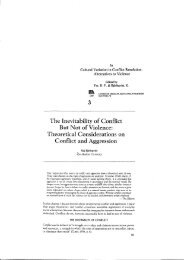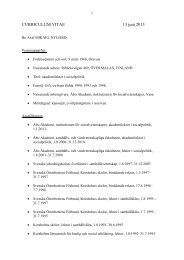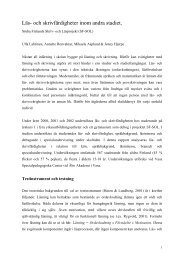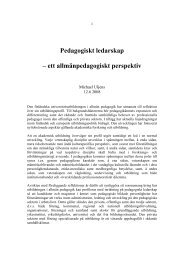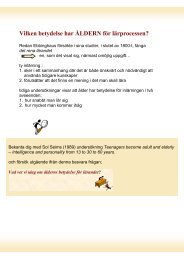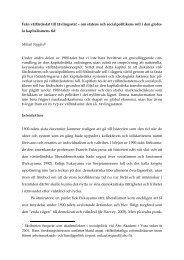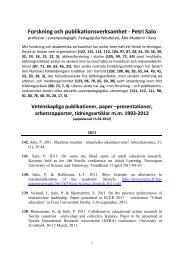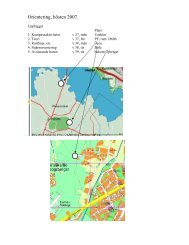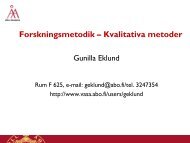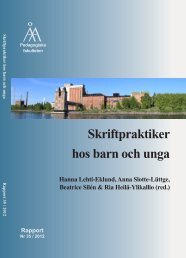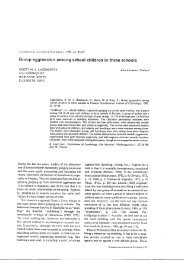Parties, Candidates and Citizens On-Line - Åbo Akademi
Parties, Candidates and Citizens On-Line - Åbo Akademi
Parties, Candidates and Citizens On-Line - Åbo Akademi
You also want an ePaper? Increase the reach of your titles
YUMPU automatically turns print PDFs into web optimized ePapers that Google loves.
Introduction<br />
Party communication has evolved in different stages over time (Farrell & Webb 2000,<br />
103-108; Norris 2001a, 137-149; Plasser & Plasser 2002, 6). Recently, new communication<br />
technologies have given the political actors new campaign tools <strong>and</strong> communication<br />
channels (Hansen et al. 2005, 2; Norris 2001a, 120-136; Smith 2002, 175). The rise of the<br />
internet <strong>and</strong> other information <strong>and</strong> communication tools (ICTs) raised a considerable<br />
amount of scholarly attention as to its impact on party communication (see discussion in<br />
Norris 2003, 23-24).<br />
The internet is a relatively cheap <strong>and</strong> fast communication tool; large amounts of<br />
information <strong>and</strong> multimedia can be published almost instantaneously. It also enables<br />
interactivity, two-way communication <strong>and</strong> offers an opportunity to bypass traditional<br />
mass-media in getting the political messages to the public (Kamarck 1999). Thus, the<br />
internet could enhance both the top-down <strong>and</strong> the bottom-up information currents<br />
surrounding political parties (cf. Norris 2003, 26; Römmele 2003, 9-11). The web could be<br />
used for the dissemination of top-down information such as broadcasting or<br />
narrowcasting of political messages, catch-all strategies or targeting of specific voter<br />
segments, the use of more multimedia <strong>and</strong> political sound bites. Also as Ward et al. argue<br />
(2003, 16-18), the use of ICTs could bring about a return to more traditional forms of<br />
party campaign communication in emphasising information over sound bites,<br />
personalized campaigning over catch-all strategies, interactive relationships over topdown<br />
information <strong>and</strong> decentralized campaigning over centralised.<br />
Evidently, there is a noticeable uncertainty concerning the potential effects of the<br />
web on party communication. However, Römmele (2003, 8) has provided an insightful<br />
view on how the usage of ICTs by political parties could be considered. She argues that:<br />
“…new ICTs will play different roles for different parties […] The<br />
impact of innovations such as the Internet on political actors is in part a<br />
function of their inherent technical capabilities, but also a product of the<br />
context in which they are used” (Römmele 2003, 8)<br />
In order to better underst<strong>and</strong> how ICTs will be implemented by political parties one<br />
should take the influence of the actual users of the technology, i.e. the parties themselves,<br />
into account (Gibson et al. 2003b, 86-90). This theoretical view, which I choose to call an<br />
‘actor-contructivist’ view, is also traceable in other studies as well (e.g. Löfgren 2001;<br />
Pedersen & Saglie 2005). In her study, Römmele (2003, 15) mainly considered the usage<br />
of websites by political parties in relation to their overall goals <strong>and</strong> strategies (cf. Gibson<br />
86



